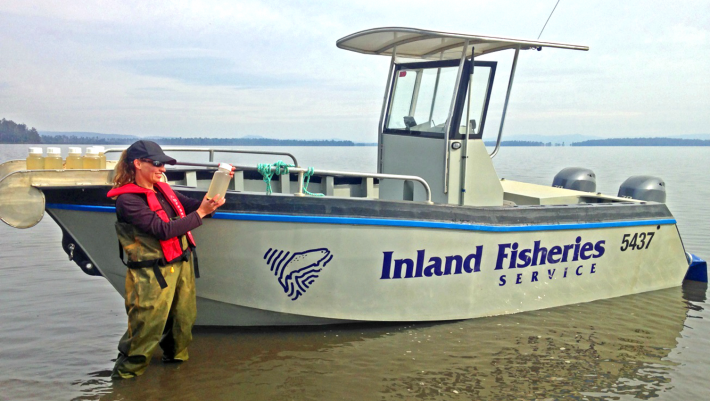eDNA: a new tool to establish invasive species eradication success
University of Canberra press release.
Research published today in the Journal for Applied Ecology, examined how environmental DNA (eDNA) surveys can be used as a cost-effective method to detect invasive species present at low densities.

A group of researchers from the University of Canberra looked at the invasive European carp, Cyprinus carpio, in two Tasmanian lakes that have been undergoing a carp eradication program since 1995.
Lead researcher Dr Elise Furlan from the University of Canberra examined the two lakes in Tasmania. Lake Crescent in which carp had been eradicated and Lake Sorell in which carp are currently being eradicated.
“eDNA surveys involve the collection and analyses of an environmental sample, like a water sample, to infer a species presence from trace amounts of DNA they shed into their environment. eDNA surveys can provide a cost-effective way to detect species at low densities and importantly the sensitivity of eDNA surveys can be quantified. Therefore, it can be a valuable tool to determine if an invasive species, especially an aquatic species, is present or not.
“Knowing when to stop an eradication program, like those in Tasmania for European carp, is challenging. If it’s too early the invasive species will likely increase in numbers again, but if it is prolonged it incurs unnecessary costs.
“eDNA surveys are able to assist in determining if the invasive species is still present, which helps those running the programs to make informed choices about whether to continue or stop a program.” Dr Furlan said.
The ACT also had a part to play in the research being undertaken in Tasmania.
“Lake Ginninderra in the ACT was surveyed extensively to get an idea of eDNA distribution in a lake where carp are plentiful and this information was used to inform the sampling and modelling used in Tasmania,” said Dr Furlan.
The paper ‘eDNA surveys to detect species at very low densities: A case study of European carp eradication in Tasmania, Australia’ can be found following this link.
Read full study (free to read for a limited time):
Furlan EM, Gleeson D, Wisniewski C, Yick J, Duncan RP. eDNA surveys to detect species at very low densities: A case study of European carp eradication in Tasmania, Australia. J Appl Ecol. 2019;00:1–13. https://doi.org/10.1111/1365-2664.13485
Media contacts:
Suzanne Lazaroo: 0409 140 415
Like what we stand for?
Support our mission and help develop the next generation of ecologists by donating to the British Ecological Society.